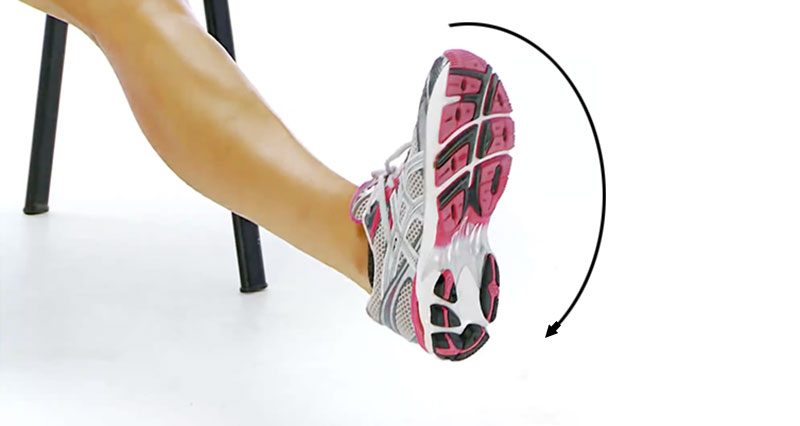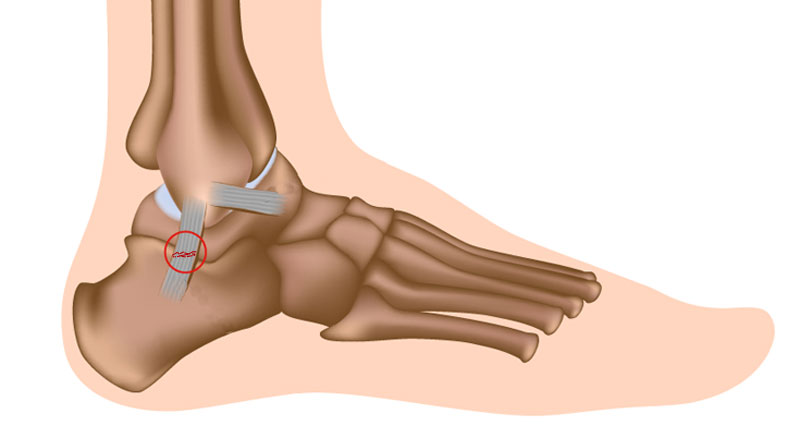Plantar flexion is the movement that occurs at the ankle where the foot is pointed downwards. For example when you go up onto your toes. It is the opposite of dorsiflexion, which is pointing the foot upwards.
Which muscles plantar flex the ankle?
- Gastrocnemius
- Soleus
- Flexor hallucis longus
- Flexor digitorum longus
- Tibialis posterior
- Peroneus brevis
- Peroneus longus
Gastrocnemius
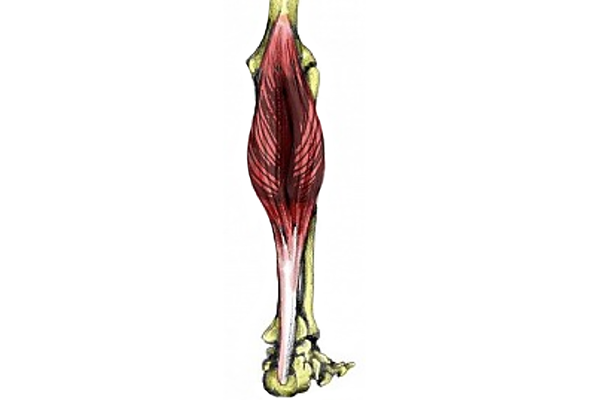
Gastrocnemius is the largest and most superficial of the ankle muscles. Together the Gastrocnemius, Soleus, and Plantaris are known as Triceps Surae. The Gastrocnemius is the main propellant in walking and running.
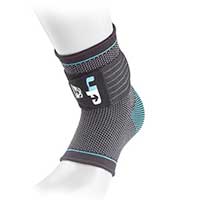
Buy Ankle Supports
- Origin: Lower posterior surface of the femur above the medial condyle. Lateral condyle of the femur.
- Insertion: Posterior surface of the calcaneus via the Achilles tendon.
- Actions: Plantar flexion.
- Innervation: Tibial nerve.
- Daily uses: Standing on tiptoes.
- Example strengthening exercises: Calf raises.
- Example stretches: Gastrocnemius stretch.
Soleus
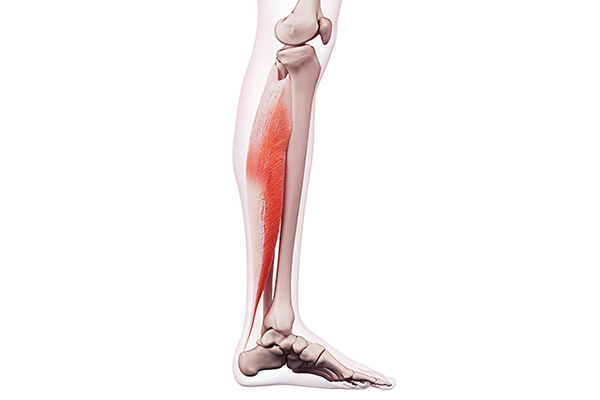
Soleus is a large muscle, deep to Gastrocnemius. Together the Gastrocnemius, Soleus, and Plantaris are known as Triceps Surae. Soleus is used constantly in standing to maintain an upright position.
- Origin: Upper half of the posterior surface of the tibia, along the soleal line.
Upper third of the posterior fibula. - Insertion: Posterior surface of the calcaneus via the Achilles tendon.
- Actions: Plantar flexion.
- Innervation: Tibial nerve.
- Daily uses: Standing upright.
- Example strengthening exercises: Seated calf raises.
- Example stretches: Soleus stretch.
- Related injuries: Calf strain.
Tibialis Posterior
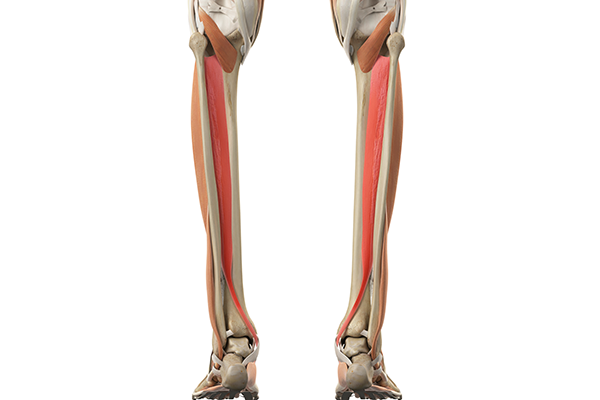
The Tibialis Posterior is the deepest of all the calf muscles. It helps to support the arch of the foot.
- Origin: Interosseous membrane (between the tibia and fibula). Posterior surfaces of the tibia and fibula, adjacent to the interosseous membrane.
- Insertion: Navicular tuberosity, Cuneiforms, Cuboid, 2nd, 3rd, and 4th metatarsals.
- Actions: Plantarflexion & Inversion.
- Innervation: Tibial nerve.
- Daily uses: Pushing down car pedals
- Example strengthening exercises: Tibialis posterior exercise with band.
Peroneus Longus
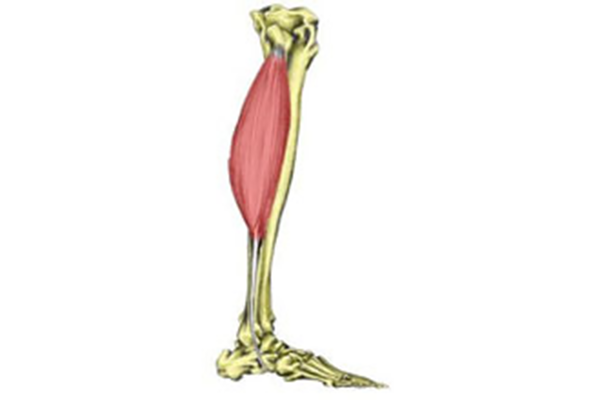
Peroneus Longus is one of the peroneal muscle groups which passes down the outside of the lower leg and everts (turns out) the foot. These muscles are sometimes referred to as fibularis longus and brevis due to their attachments on to the fibula.
- Origin: Head of fibula. Upper 2/3 of fibula.
- Insertion: Base of underside of first metatarsal.
Undersurfaces of cuneiforms. - Actions: Eversion. Plantarflexion.
- Innervation: Superficial peroneal (fibular) nerve.
- Daily uses: Walking on uneven surfaces.
- Example strengthening exercises: Active eversion with band
- Example stretches: Peroneals stretch.
Peroneus Brevis
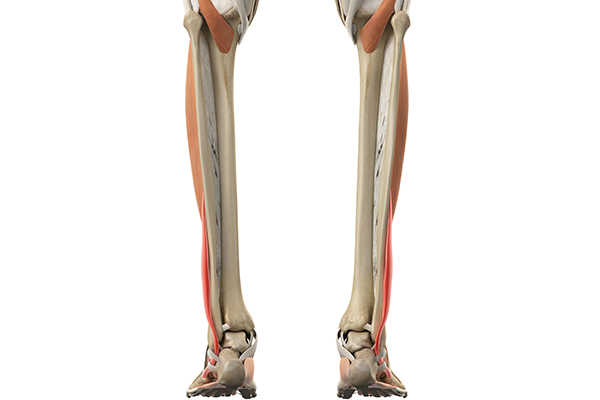
Peroneus Brevis is one of the peroneal muscles in the ankle which passes down the outside of the lower leg and everts (turn outwards) the foot. These muscles are sometimes referred to as Fibularis brevis and longus due to their attachments on the fibula.
- Origin: Lower 2/3 of the lateral surface of the fibula.
- Insertion: Base of the 5th metatarsal.
- Actions: Eversion Plantarflexion.
- Innervation: Superficial peroneal (fibular) nerve.
- Daily uses: Walking on uneven surfaces.
- Example strengthening exercises: Active eversion with band
- Example stretches: Peroneals stretch.
Flexor Hallucis Longus
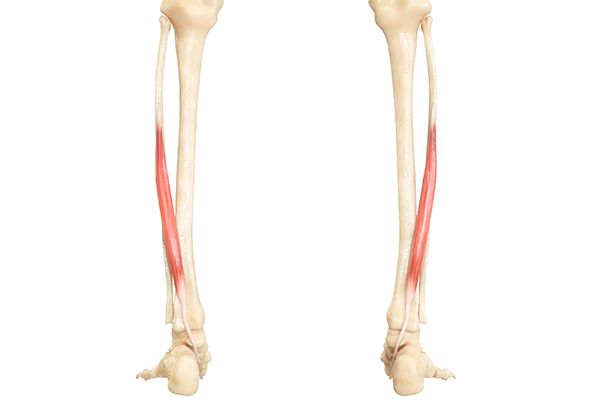
Flexor Hallucis Longus bends the big toe when you curl up your foot. It is called ‘Hallucis’ like the word Hallux means great or big toe in Latin. This muscle also supports the longitudinal arch of the foot.
- Origin: Lower 2/3 of the posterior surface of the fibula.
- Insertion: Plantar (sole of the foot) aspect of the base of the distal (furthest) phalange of the big toe.
- Actions: Flexion of the big toe. Inversion. Plantarflexion.
- Innervation: Tibial nerve.
- Daily uses: Pushing off the surface in walking.
- Example stretches: Soleus stretch.
Flexor Digitorum Longus
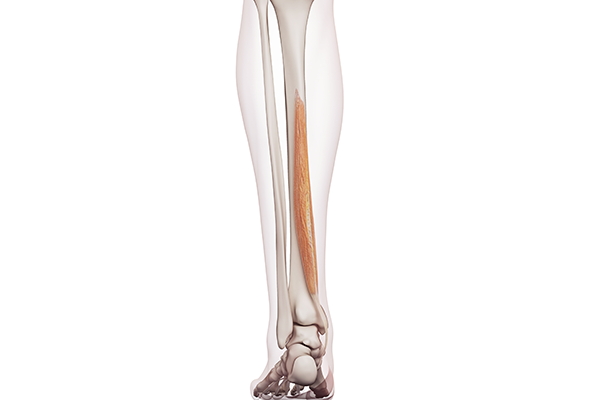
Flexor Digitorum Longus causes the toes to grip and mold to the floor’s surface which is vital in maintaining balance on rough surfaces. The tendons pass under the foot. Walking barefoot on an uneven surface is an excellent exercise for this muscle.
- Origin: Lower 2/3 of the posterior surface of the tibia.
- Insertion: Plantar (bottom) aspect of the base of the distal (furthest) phalanges of each of the four toes.
- Actions: Plantarflexion. Inversion. Flexion of the toes.
- Innervation: Tibial nerve.
- Daily uses: Gripping with the toes.
- Example stretches: Soleus stretch.
